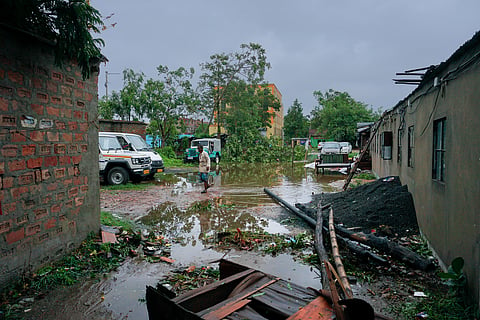

Germanwatch’s Climate Risk Index 2026 reveals 9,700 extreme weather events since 1995.
Poorer nations bear the brunt, with Dominica, Myanmar and India among the worst hit.
India recorded nearly 80,000 deaths and $170 billion in losses from climate disasters.
Germanwatch urges COP30 leaders to close the “ambition gap” and deliver real finance for recovery.
Extreme weather events have killed more than 832,000 people and caused economic losses exceeding $4.5 trillion (over Rs 39 lakh crore) worldwide between 1995 and 2024, according to the Climate Risk Index (CRI) 2026.
The report, released on November 12, 2025, by policy initiative Germanwatch on the sidelines of the 30th Conference of Parties (COP30) to the United Nations Framework Convention on Climate Change in Belém, Brazil, draws on data from the EM-DAT international disaster database, the International Monetary Fund (IMF), and the World Bank. It highlighted how intensifying storms, floods, heatwaves, and droughts are exacting an ever-greater toll, particularly on poorer nations.
While the CRI shows that no country is immune, those in the Global South have been hit hardest. India ranks ninth among countries most affected by extreme weather events over the past three decades, placing it alongside nations such as Dominica, Myanmar, and Honduras.
“India, along with Haiti and the Philippines, is hit by a range of climate extremes — from deadly heatwaves to destructive floods and cyclones — so regularly that recovery barely keeps pace with recurring damage,” said Vera Künzel, co-author and senior advisor on climate change adaptation and human rights at Germanwatch, in a statement.
The report finds that the world has endured more than 9,700 documented extreme weather events since 1995. Of these, storms and heatwaves each caused roughly a third of all fatalities, while floods affected nearly half of those impacted. Storms alone accounted for 58 per cent of all economic losses, or about $2.64 trillion.
Dominica tops the long-term ranking (1995-2024), followed by Myanmar, Honduras, Libya, Haiti, Grenada, the Philippines, Nicaragua, India, and the Bahamas, according to the CRI 2026. For 2024 alone, the countries most affected were St Vincent and the Grenadines, Grenada, Chad, Papua New Guinea, Niger, Nepal, the Philippines, Malawi, Myanmar, and Vietnam, many of them small island or low-income states.
“Climate change is not a distant threat — it’s today’s defining reality,” said Laura Schäfer, one of CRI’s authors and head of international climate policy at Germanwatch in a statement. “Heatwaves and storms now pose the greatest threat to human life, and we’re witnessing economic devastation on a scale that would have been unimaginable just a few decades ago.”
The CRI draws a clear line between global warming and escalating disasters. The year 2024 was the hottest on record, with global average temperatures exceeding 1.5°C above pre-industrial levels for the first time. Sea surface temperatures in the North Atlantic and Mediterranean hit unprecedented highs, fuelling hurricanes and flash floods across continents.
A World Weather Attribution study cited in the report found that human-induced climate change made such extremes far more likely and more intense than climate phenomenon El Niño alone.
In India, a string of catastrophic events pushed the country into the top ten. From Cyclones Amphan and Hudhud to the Uttarakhand floods and record-breaking heatwaves, the cumulative toll has been a staggering 80,000 deaths, 1.3 billion people affected, and economic losses of about $170 billion over 30 years. The report noted that India’s densely populated river basins and coastal zones are particularly vulnerable, even as adaptation measures remain uneven.
“The Climate Risk Index is a warning light flashing red,” said David Eckstein, co-author and senior advisor on climate finance and investments at Germanwatch, in a statement. “COP30 must deliver real progress — not more pledges. Emissions must fall sharply, adaptation must accelerate, and loss and damage finance must finally reach those who need it most. The global ambition gap is not just a policy failure — it’s a matter of survival.”
The report also references a landmark advisory opinion issued earlier this year by the International Court of Justice, which affirmed that states have a legal duty to prevent and respond to the harms caused by climate change. The finding added both moral and legal weight to the growing demand for accountability from industrialised nations.
Despite mounting evidence, Germanwatch warns that the world remains dangerously off track. “We are entering a new normal of continuous climate shocks,” said Schäfer. “Without stronger global cooperation and long-term support for vulnerable countries, we risk locking billions into a cycle of destruction and recovery that never ends.”